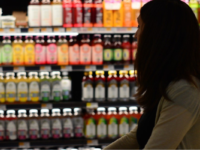
The grocery landscape in Australia is more competitive than ever before, there is a multitude of other shopping channels to stay in tune with.
In just over a year, retailers such as Coles have teamed up with Uber Eats, Woolworths opened its first Caltex Metro supermarket and David Jones entered the convenience market with BP.
Traditionally, shopper panels have helped the grocery industry to understand the purchasing habits of Australian consumers, but in an increasingly fragmented market it’s no longer enough to just keep track of traditional channels and stores.
The Uno Group & co and insights company Nielsen have collaborated to address this need for more information. They have developed a platform that extends beyond traditional shopping channels so that manufacturers and retailers can understand buying behaviours across the likes of Asian supermarkets, online meal delivery, convenience, pet stores and more.
“It’s like a 21st century consumer panel,” Tyler Spooner, CEO of The Uno Group & co, said. “We capture more of the out-of-home consumption complementing the take-home purchasing of Nielsen’s Homescan panel.”
Customers are invited to upload their shopping receipts to an app to earn points, which they can later cash out. Technology is then used to extract line items from the receipts to provide insights into how people are shopping across multiple stores.
“We capture Coles, Woolworths and Aldi but we also capture BP, when they go online, when they go out to a restaurant, every single receipt. So, it’s more of a 360 view of how they shop.”
Spooner said the platform is about dismantling the ‘why’ behind the ‘buy’ so that manufacturers can be better informed about where their product should sit. And, retailers can be better informed about what their shoppers are buying in other stores.
“For those that go to the Asian grocery stores to buy a particular brand of noodles that they can’t get at Coles or Woolworths, they’re not only buying the noodles, they’re buying eggs, they’re buying some fruits and vegetables. So, it’s understanding how they’re shopping in between the stores and what they’re choosing to buy in certain locations,” he said.
With meal delivery platforms continuing to gain momentum and move further into the grocery space, they can offer a valuable insight into changing consumer behaviour.
“We track fast food consumption as well, because we think more about share of stomach rather than share of category. So, what is competing for the stomach of the consumer? Have they stopped buying roast chickens at Coles and Woolworths because there’s a chicken special on KFC?
“Have we got category leakage here or are have consumers chosen a completely different offering.”
Since the platform launched a year ago, over a million shopping trips have been captured across more than 10,000 stores, capturing over 200,000 new shopping trips each month.
“We’re getting more data, we’re seeing a lot more transactions, across a variety of touchpoints for the consumer; and that’s only going to grow in time,” he said.
While the platform opens up a host of insights for manufacturers Spooner insists that Homescan is still retail currency for consumer panel data, they’re simply ‘supercharging’ the omnichannel coverage.
To find out more, visit unocart.tech













